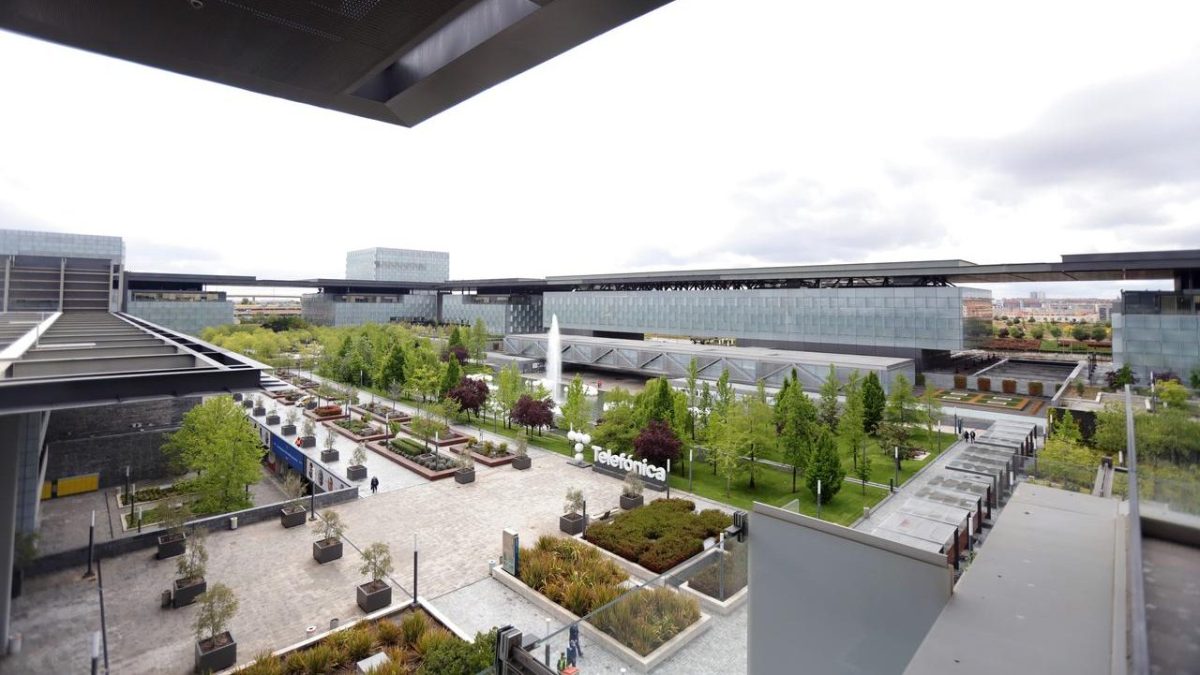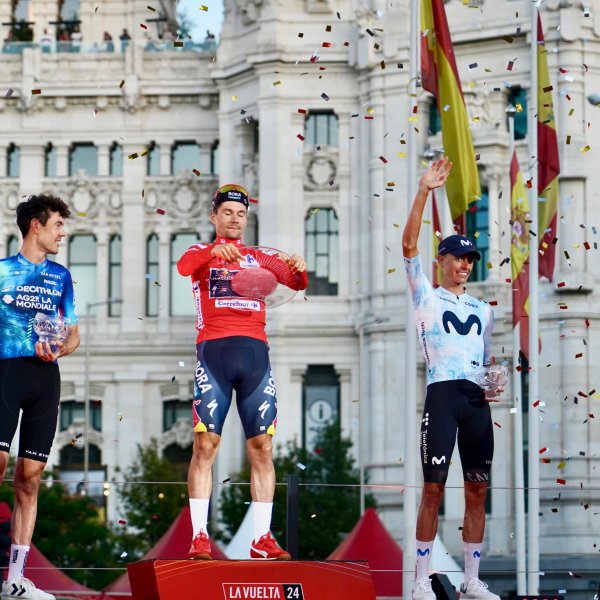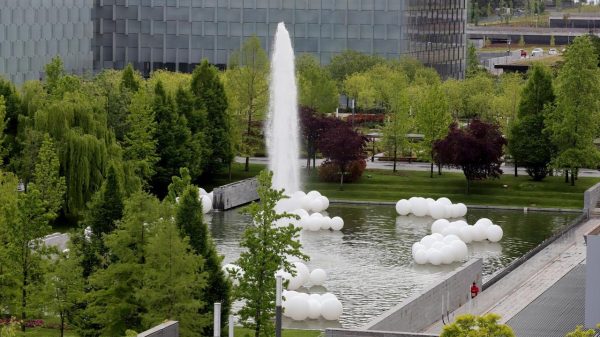Some of us are very lucky, we work at Telefónica, in Madrid and in a privileged location. We started with Plaza Este:
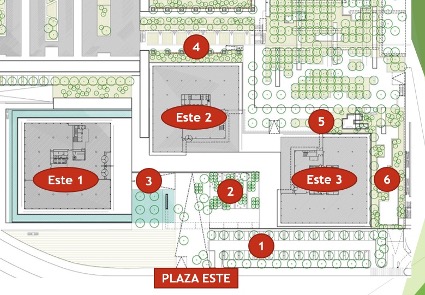
As is repeated in all the visitor parking areas, there are two rows of trees that turn out to be lime trees (Tilia cordata) and between them bushes of cherry laurel (Prunus laurocerasus), many of which are already in flower.
As we enter the East square, we are greeted by several specimens of golden bamboo (Phyllostachis aurea) scattered around the central area of the square and, if you go up the stairs towards the East 3 building, in several rows we can see boxwood (Buxus sempervirens).
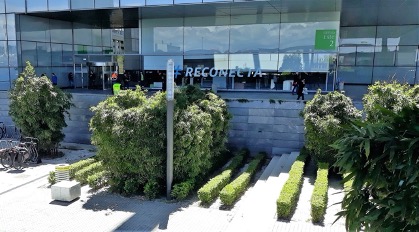
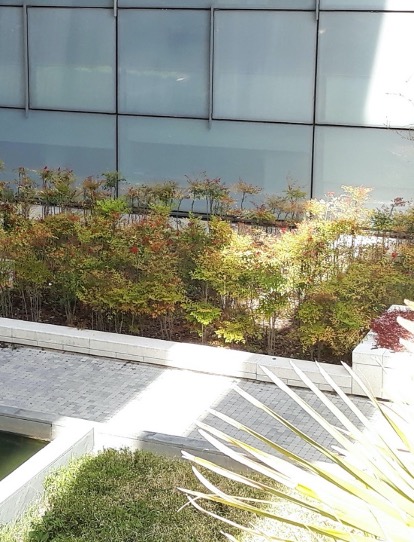
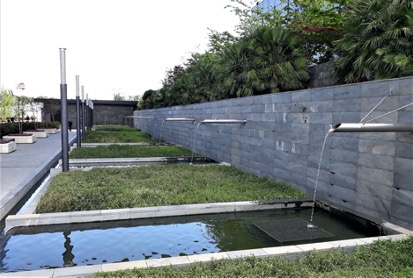
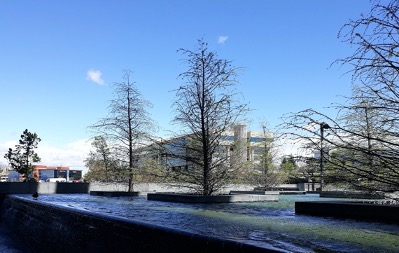
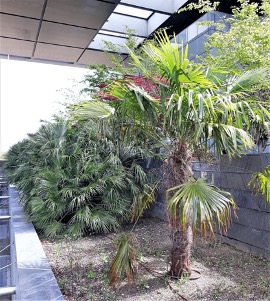
On the other hand, if we take the ramp towards the East 1 building, we can see six specimens of Bald Cypress (Taxodium distichum) on the left.
We continue walking towards the area behind the East 2 building and we find the area known as the Jardín de los Caños Este (Garden of the East Spouts).
In the information on the Telefónica District landscape project, we can read that this beautiful area “recovers the water treatment used in the Hispano-Arabic gardens” as this is where one of the two water channels that reach the central pond originates.
It is also a terraced garden with a mixture of different species from humid environments. On this occasion we can observe Iron Tree (Parrotia persica), Jupiter Tree (Lagerstroemia indica) and Japanese Maple (Acer palmatum) which contrast in texture and colour.
On the next lower terrace we find Palmito (Chamaerops humilis), and lastly, between the spouts, areas of Dwarf Bamboo (Pleioblastus spp).
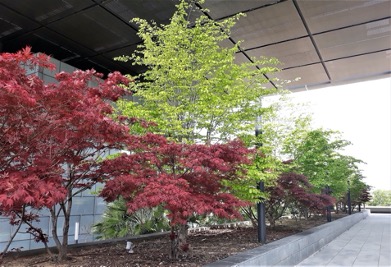
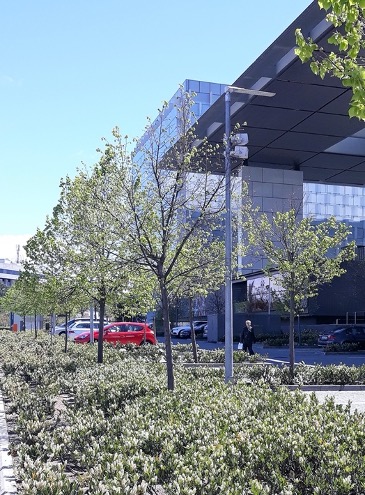
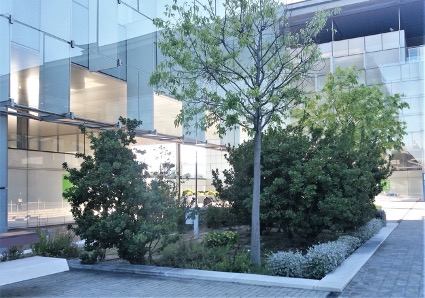
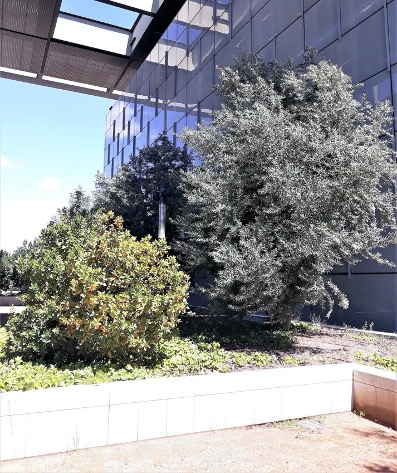
Directly opposite, at the back of the East 2 building, there is an area of Sacred Bamboo (Nandina domestica).
I hope you enjoyed this visit, see you in the next square.
Continuing along the path we head towards the East building 3. On its sunniest side and in a few metres we can see: Strawberry tree (Arbutus unedo), Olivilla (Teucriun fruticans), Durillo (Viburnum tinus), Boxwood (Buxus sempervirens), Gaura (Oenothera lindheimeri) and specimens of hackberry (Celtis australis).
To finish this walk we continue along the edge of the East Building 3 to enter the area known as the East Sandpit. Here we can find beautiful specimens of strawberry tree (Arbutus unedo) and olive tree (Olea europea), some of them of enormous size. There are also some specimens of Olivilla (Phyllirea angustifolia) and some areas with Ivy (Hedera helix).
